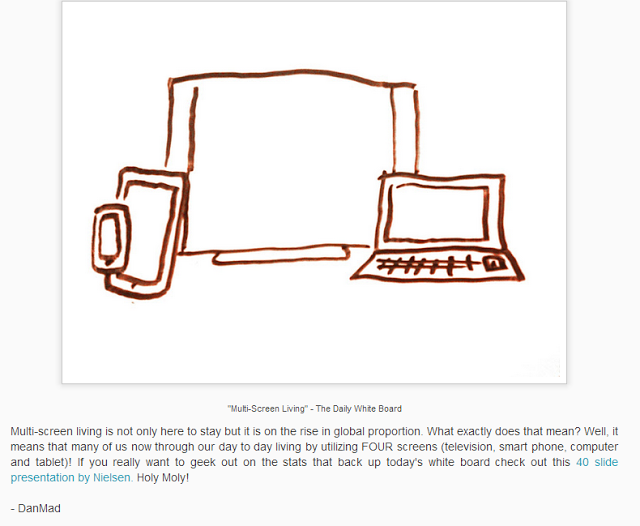"Text Analytics for (Really Smart) Dummies" Part 2: Big Blue's Unique Use Case

IBM Turns Text Analytics Inward to Learn from Employees
By Marc Dresner, IIR USA
Part I of our text analytics series featured a specialist provider'something of a pioneer in the field'whose firm has recently developed a DIY text analytics tool. I think you'll agree that Tom Anderson did a nice job of helping us parse fad from fact.
So for Part II of 'Text Analytics for (Really Smart) Dummies,' we've turned to an intriguing text analytics use case, courtesy of another pioneer in the space: Big Blue (NYSE:IBM).
What I appreciate about this one is that IBM is both a text analytics user and a provider, which may or may not inform your thinking when you read this interview.
I can't speak to the software, because that wasn't covered in this session, but we have here a great example of text analytics in action.
They call them 'IBMers''an almost cult-like bunch of some of the best and brightest technologists on the planet, driven by a culture of innovation embodied in three letters: I-B-M.
 And it's up to Senior Research Manager Dr. James Newswanger to help IBM maintain a competitive edge by understanding and learning from them'
And it's up to Senior Research Manager Dr. James Newswanger to help IBM maintain a competitive edge by understanding and learning from them'
Q: Jim, please tell us a bit about your role and if/how you need to analyze qualitative data and/or text.
JN: I lead a group known as Corporate Workplace Analytics within the IBM CIO division. We study IBMers' use of our major enterprise IT tools, including the intranet, Connections, Lotus Notes, social media, etc. Our group specializes in primary and secondary studies, as well as quantitative and qualitative methods. We have been increasingly focused on text analytics and ways to make meaning of content in unstructured data sets.
Q: For clarification, what exactly do you mean when you refer to "text analytics"?
JN: To me, text analytics is the process of taking in content, using software to mine the content for meaning, and offering a presentation interface that allows researchers to find insight.
Q: Is text analytics really new?
JN: Some parts of text analytics are old. For example, human beings acting as coders have been mining open-end comments for meaning for a long time.
Q: How have text analytics evolved over the past few years?
JN: What's new is the expansion of online commentary offered by blogs, microblogs, news feeds, etc., and the software tools available to analyze text, often in real, or near-real, time.
Q: Is all text analytics the same or are there different types?
JN: There are different types of text analysis, driven by particular project requirements. Some researchers need to find basic themes in text, some need to identify "sentiment" associated with themes, some need to link themes to authors and networks, etc. And the time frames and database sizes can vary widely.
Q: How has market research as a use case evolved in terms of text analytics, both in general and for your company specifically?
JN: Some market research professionals make claims that text mining can substitute for other forms of traditional primary research. Some say, instead of launching a scientific survey to determine opinions on a particular topic, we might just mine the blogosphere or Facebook postings, etc., for the end result.
Q: What are some of the most important use cases?
JN: Examples involving challenges to traditional market research techniques'especially sampling rules'are the most important use cases in my opinion.
Q: How much of text analytics involves Big Data, and do you think market researchers should/do have the skills and tools needed to leverage it?
JN: Text analytics may involve Big Data, it depends on particular project requirements. If I want to mine the Web for public opinions about a topic as broad as a popular movie, television show, or government issue, then Big Data sets will clearly be in play. Data set requirements are driven by the number and scope of content sources, the length of time under review, and any real-time demands on delivery.
Q: What criteria should an organization use to base a decision to (a) develop an in-house text analytics capability, b) outsource text analytics or c) adopt a hybrid model?
JN: To develop an in-house text analytics capability, an organization must have analysts capable of using one or more software tools developed for text mining. The organization must own or license software deemed effective for this analysis.
Q: What questions need to be asked in order to determine an appropriate capabilities provider?
JN: Some of the issues to consider include cost, user interface, scope of content coverage and source of content, presentation and reporting capabilities, specific linguistic analysis features, and customization.
Thanks Jim! That concludes Part II. Next up, Kodak Gallery weighs text analytics' potential fit within its market research efforts.
Editor's note: To learn more about text analytics, don't miss The Market Research Technology Event 'a unique forum dedicated to the exploration and promotion of technological innovations in consumer and market research and business intelligence'taking place April 30 thru May 2 in Las Vegas. As a reader of this blog, when you register to join us, mention code MRTECH12BLOG and save 10% off the standard rate!
 ABOUT THE AUTHOR/INTERVIEWER
ABOUT THE AUTHOR/INTERVIEWER
Marc Dresner is an IIR USA communication lead specializing in audience engagement. He is the former executive editor of Research Business Report, a confidential newsletter for the market research industry. He may be reached at mdresner@iirusa.com. Follow him @mdrezz.